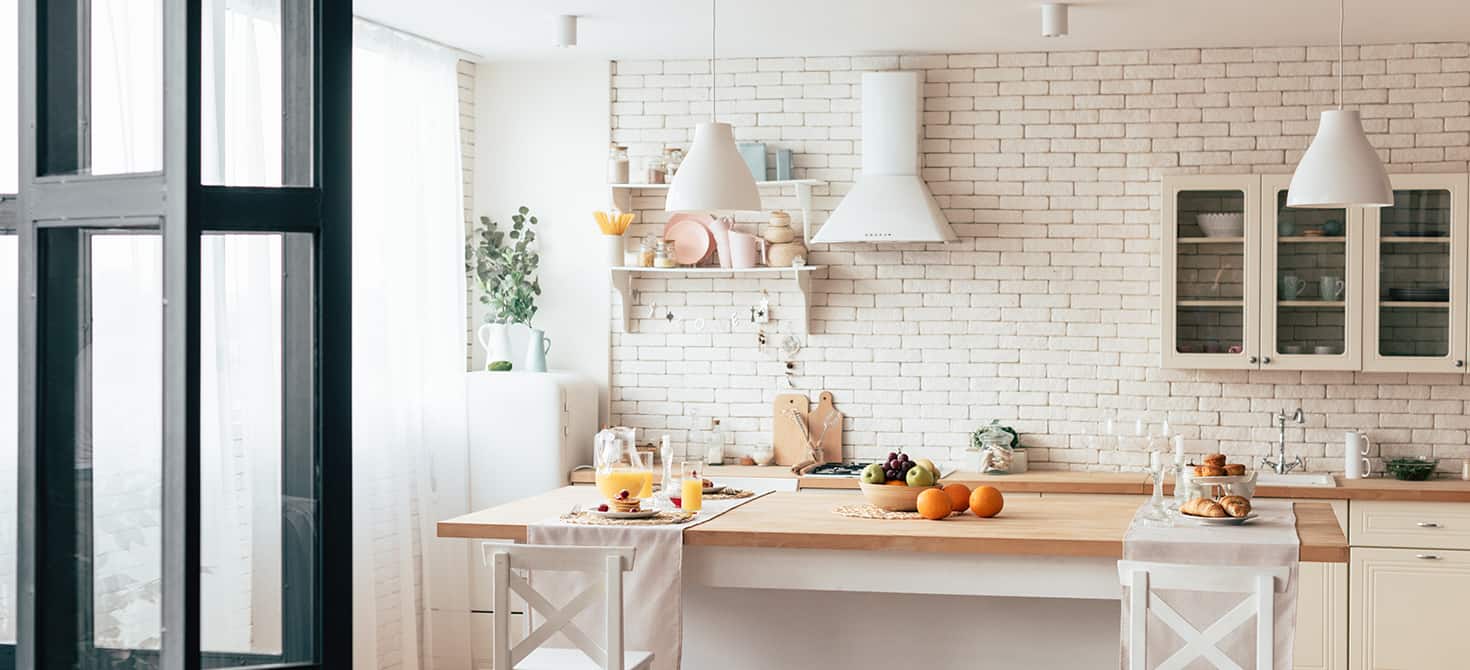- Furnishing trends
- 0 likes
- 2812 views

The return of wood to the kitchen is a trend that has certainly marked the last few years in terms of interior design. This natural material has once again become the absolute protagonist of the kitchen, with its countless variations, finishes and essences.
In general terms, we can say that wood as a furnishing material has never actually disappeared from Italian kitchens: however, there were years when other materials were preferred for kitchen elements. In the last two years in particular, however, wood has come back into the limelight, thanks to the need to search for a renewed simplicity of form and style in contemporary kitchens.
The great advantage of this timeless natural material is the multitude of facets and styles it can offer.
In the following paragraphs we will provide you with some important tips and advice on how to choose the style of your kitchen using wood: here is all you need to know!
Index
How to choose your perfect wooden kitchen
When choosing a wooden kitchen that fully meets your technical and aesthetic needs, it is first of all important to know this material well. There are many types of wood that are used to make furniture and kitchen elements.
The most precious woods, such as ebony, rosewood, mahogany and cherry are definitely warmer and more enveloping materials. These materials tend to be used to create more typically vintage atmospheres.
In interior design, we must not forget the importance of recovering antique wood: for example, an old wooden table can be recovered and used in its own furnishing context, especially by lovers of vintage style.
Below we will give you some important indications on the use of wood in the kitchen, with reference to the different styles and configurations of your spaces.

Vintage-style wooden kitchen
How to choose kitchen furniture for a typically vintage retro configuration? The great return of vintage style is certainly one of the most recent trends in contemporary kitchen design. In this regard, wood is certainly one of the favourite materials for the creation of a kitchen that expressly recalls the vintage style.
We should also point out that nowadays the vintage style goes hand in hand with the industrial style: the two styles prefer the choice and selection of raw and solid wood, in some cases combined with metal elements. In both styles, there is plenty of room for the use of wooden accessories and tools (especially crockery and chopping boards).
Scandinavian style wooden kitchen
Another furnishing style that favours the extensive use of wood is certainly the Scandinavian style. Scandinavian style, also known as hygge, is not just a style of furnishing but in some ways a real way of life.
The term hygge describes the great sense of intimacy and warmth typical of the Scandinavian style. The aim of this furnishing style is to offer people an atmosphere that is as relaxing as possible and that encourages sharing and conviviality.
The Scandinavian furnishing style favours light wood elements (e.g. bleached oak, birch or ash). The main focus in a hygge configuration is on simplicity and space for guests. Typical of this style is the presence of wooden benches and tables, often positioned in the context of an open space. As for fabrics and curtains, linen and warm carpets are widely used, on which to walk on cold Nordic winter days.
Wooden kitchen: main advantages and disadvantages
As pointed out in the previous paragraphs, a wooden kitchen can be made with a wide range of materials, which allows for infinite customisations and style adaptations. A great advantage of wooden furniture is certainly its great resistance and ease of repair.
With wooden elements it is also possible to change the look of your space without necessarily replacing the furniture: just think of repainting furniture and wooden elements.
When it comes to the disadvantages of this material, it should be noted that wood certainly requires a higher initial investment than other types of materials. The quality of this natural material is certainly higher than that of many commercially available artificial materials.
Wood is also a material that could be described as truly living, which implies some minor disadvantages. It is particularly sensitive to moisture. Its materiality also makes it susceptible to transformation by the action of light.
It is also important to note that not all wooden furniture can be treated with the same products. The maintenance and cleaning of wooden furniture and coverings is usually carried out with the aid of a simple damp cloth, wiped strictly in the direction of the grain, and then dried.
